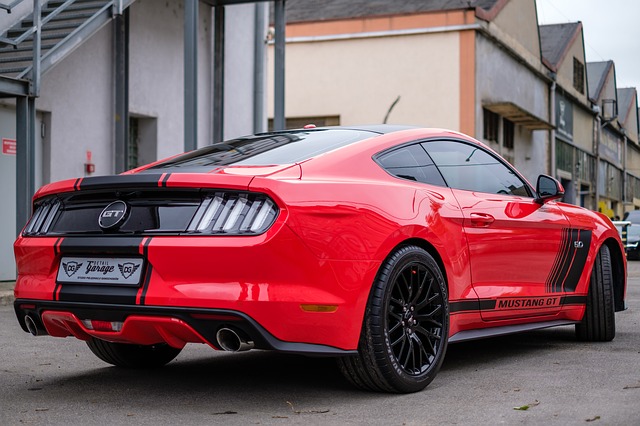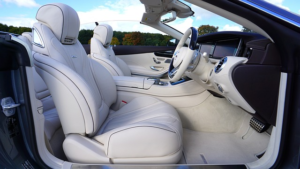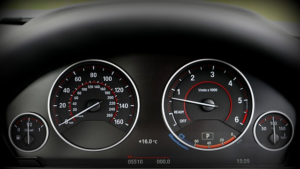The limit’s 100 km/h. So why should any new car let you go twice that? – Toronto Star
In a single weekend last month, traffic officers in York Region stopped and charged a staggering 25 drivers with stunt-driving and street-racing offences. One driver was caught clocking 178 km/h in a 50 km/h zone.
A month earlier, OPP officers had arrested and charged a 30-year-old man with stunt-driving after he struck multiple ve…….

In a single weekend last month, traffic officers in York Region stopped and charged a staggering 25 drivers with stunt-driving and street-racing offences. One driver was caught clocking 178 km/h in a 50 km/h zone.
A month earlier, OPP officers had arrested and charged a 30-year-old man with stunt-driving after he struck multiple vehicles while travelling at over 200 km/h from Oakville to Niagara Falls. Last March, traffic officers caught a 19-year-old Brampton resident driving at 221 km/h on Highway 400, where the maximum is 100 km/h.
Across the GTA, reckless drivers like these are taking advantage of their vehicles’ capacity to hit extreme speeds. And with traffic enforcement capable of doing only so much, road safety advocates and experts say the automotive industry must play a part to fight speeding through design.
Most highways in Canada have a 100 km/h maximum. In the United States, the highest posted speed limit is 85 mph (137 km/h), found only on Texas State Highway 130. So why, advocates ask, are car manufacturers producing vehicles with the power to reach twice these speeds, or more?
“The speed capacity of the car is a huge concern. It definitely doesn’t have to be 100 km over the maximum speed allowed,” said Pamela Fuselli, president and CEO of Parachute, a Canadian charity advocating for the end of road fatalities and injuries.
She added that many newer cars have the power to accelerate very fast while also offering a level of comfort that can make drivers feel “invincible,” and thus prone to over-speeding. “You don’t realize how fast you’re going. You don’t hear the road as much, it’s a much smoother ride and you have drivers looking down at their speedometer and thinking: ‘Oh my gosh I can’t believe I’m going that fast.’ It just doesn’t feel like it,” she added.
Speeding is by far the main factor in fatal collisions on Toronto streets. According to police data, all 40 deadly crashes in 2020 involved speeding drivers. In 2019, it was 46 of the 64 total fatal collisions. A year prior, it was 59 out of 66. In the United States, speeding drivers are responsible for nearly 10,000 deaths every year, according to the National Centre for Statistics Analysis.
Incidents of street-racing and stunt-driving — when a driver is caught going 50 km/h faster than the posted speed limit — have increased in the GTA in recent years, and with them comes the increased damage. According to Ontario data, drivers going 50 km/h or more over the maximum are 11 times more likely to cause death or serious injury than those going at or below the limit.
Efforts to impose speed controls that don’t rely on changing driver behaviour tend to cause controversy. In 2019, the European Union introduced plans to use speed-limiting technologies in new car models to automatically restrict engine power and control the driver’s ability to accelerate over the allowed speed limit. But Germany, a car-manufacturing leader famous for its network of no-limit autobahns, was among the countries that rejected the proposal. Opponents of the plan argued that roads are increasingly better and cars safer.
But some manufacturers are already taking action. Merhawit Habte, spokesperson for Volvo Cars Global, said the company has capped the speed capacity on all its new cars to 180 km/h starting with the 2021 production year. It is the first major vehicle manufacturer in the world to limit the maximum speed on all its cars.
“Volvo Cars has a vision to eliminate serious injuries and fatalities in its cars and as speeding remains one of the main causes of accidents, we have a responsibility to address it,” she said.
Habte said the company has sold 634,257 new cars in the first 11 months of 2021, up nearly nine per cent from the year before the speed cap. While Habte said few people would ever need to reach 180 km/h while driving — the speed would merit a stunt driving charge on any Ontario road — she said the cap is an important step towards the goal of achieving zero collisions.
“Capping the speed of our cars will not cure speeding, but we have a responsibility to start a discussion about whether carmakers have the right to use technology to alter consumer behaviour,” she said.
Decisions to cap vehicles’ speed and power should be based solely on safety and not luxury, said Moustafa El-Gindy, professor in the department of automotive and mechatronics engineering at Ontario Tech University.
Even on highways with speed limits of nearly 140 km/h, such as Texas 130, the Volvo limit would still offer drivers an extra 40 km/h of available acceleration, he said. “In my opinion, the 180 km/h limit is good enough to be set as a law to be implemented for all passenger cars running on the roads in Canada.”
Traffic engineers must also continue to work with city governments to redesign streets, improve left- and right-turn signals and road signs, among other efforts to ensure the safety of pedestrians, cyclists and other road users, he added.
For Jonathan Schmidt, road safety advocate and member of the Toronto East Cyclists group, 180 km/h is still far too fast. Besides, he said, discussions about speed restrictions shouldn’t distract from larger issues of vehicle design. Cars are far bigger and more powerful than necessary, giving drivers a false sense of safety, he said.
“Cars are increasingly designed so that drivers do not feel they have to be careful when driving,” he said.
“We buy products that keep ourselves and our family safe, at the expense of giving up the shared responsibility we have for the safety of everyone when we operate a vehicle.”






